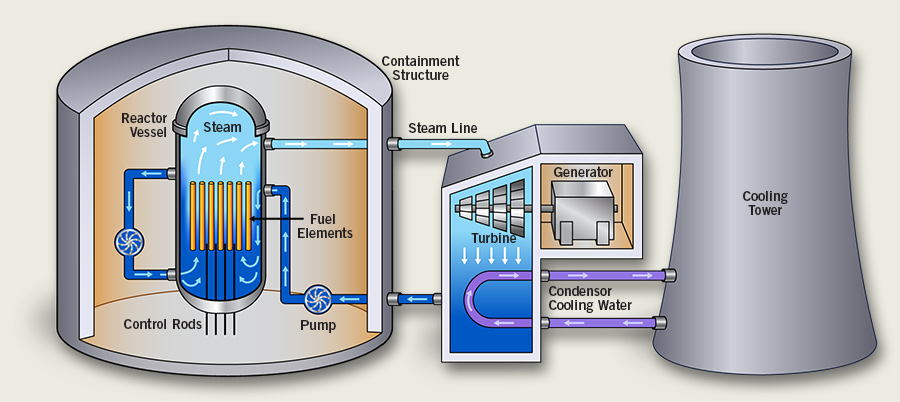Creating Electricity
A nuclear reactor does the same thing any other thermal generating plant does – it's a giant steam engine. Thermal power plants all use heat, supplied by a fuel, to boil water and make steam, which drives a turbine generator to make electricity.
 All reactors are essentially steam engines that drive turbines to create electricity.
All reactors are essentially steam engines that drive turbines to create electricity.
A generating plant's fuel, whether it is coal, gas, oil or uranium, heats water and turns it into steam. The pressure of the steam spins the blades of a giant rotating metal fan called a turbine. That turbine turns the shaft of a huge generator. Inside the generator, coils of wire and magnetic fields interact – and electricity is produced.
The basic parts of a reactor are the core, a moderator, control rods, a coolant, and shielding.
-
The core of a reactor contains the uranium fuel. For a light water reactor with an output of 1,000 megawatts, the core would contain about 75 tonnes of uranium enclosed in approximately 200 fuel assemblies.
-
The moderator, which slows down the neutrons, is usually carbon in the form of graphite and water. Slower neutrons are much more likely to cause fission and keep the reaction going.
-
Control rods, inserted into the core of the reactor, provide more precise control of the chain reaction. Pushed in, they absorb neutrons and slow down the reaction – pulled out they allow it to speed up again.
-
A liquid or gas coolant transfers the enormous heat generated by fission away from the reactor to a boiler where steam is made.
-
Shielding, typically made of steel and concrete about two metres thick, is an outer casing that prevents radiation from escaping into the environment.






